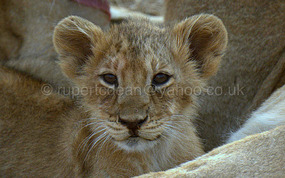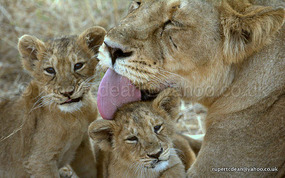The next day was to be my final day in Bhuj and when I met Kim in the morning for breakfast she invited me to join her and the two Japanese girls for lunch and then a visit to Salim Wazir’s Antique Textile collection. This was an opportunity too good to miss and we immediately left to walk around the Bhuj market beforehand, whilst waiting for the Japanese.
In the market we went to meet Chedan of Anand Handicrafts
. He does a lot of business with Kim including making dresses in the Bandhani style (a type of dying), a style for which the Kutch region is also famous. Whilst Kim was busy with freighting issues, Chedan kindly took me through some examples which did not really excite me, however on finding some great examples of dying on glazed cotton, I was much more interested.
Eventually the Japanese arrived and we piled in a tuk tuk and drove to the rather posh Ilark Hotel. Here I had a delicious Punjabi Thali which was huge and we all had a great natter about textiles which was very informative for me. Also inside the Ilark was an outlet from a famous NGO Kala Raksha. This is one of the main NGOs operating in the area with crafts and this one was based in Sumeraser Sheikh, where I been the day before. However despite all the excitement of having the chance to view their textiles I was completely underwhelmed. In fact none of us seemed particularly impressed
.
From there we grabbed a lift over to Salim Wazir’s house where he housed his family’s collection of antique textiles. The family was in the process of building a museum when the earthquake struck in 2001. This completely delayed the project, meaning the family had to start raising the finance and preparing to build all over again. Luckily most of the collection was saved. Now Salim also provides a service for museums and collectors searching for particular textiles and he has built a large sourcing network not only in Kutch, but also in the rest of Gujarat, Rajasthan and Punjab. Internationally he can also source from Pakistan, Afghanistan and Iran. Consequently he is the first port of call for many museums in North America, Europe and India. Kim also mentioned he does keep a small number of items back to show individual visitors and these are available to buy directly.
In the end we were with Salim and his staff for over two hours being guided through textiles aged between 20-120 years old and from all the territories mentioned above and made by the peoples who live there
. The items ranged from household decorations through to turbans, shawls and bed spreads. All were interesting and some were amazing. Prices varied from US $40-$1000. This was truly fascinating and Salim is a humble, interesting and very passionate man. I vowed to return and see more of the collection in January.
As we left late, Kim had to go and pack for her night train whilst I still had some time before my bus departure. Consequently when the Japanese wanted to visit another NGO I said I would accompany them. This NGO called Qusab and the work was far more to my taste than that offered by Kala Raksha. This was probably due to the fact that the colour combinations were more ‘conservative’ as Kim would say and not the colour ‘blast’ beloved by many of the artists. This work was great and we spent a while going through the textiles. In the end I ran out of time and said goodbye to the Japanese and retrieved my bags from the hotel. I bid my farewells to Kim who was leaving to stay in Salawas in Rajasthan (with my friend Chhortoram) before heading to the bus station.
Having been assured by Ishak at the Gangaram that this was a luxury sleeper bus, I was amazed and gob struck to find out it was basically a collection of coffins on wheels. I had vowed in 1994 after a hellish journey in a Chinese sleeper bus that I would never travel in a sleeper bus again, yet that bus in 1994 appeared to have been better designed than this one
. Basically there were two large cubicles either side of the aisle. On the left were two “doubles” one above another, both sealed in cubicles the length of a coffin, and on my side were two singles one on top of the other and again both sealed in. Mine was on the top and when climbed into felt like I was in the nearest thing to a coffin I had yet experienced. I vowed to be cremated after this.
Next the claustrophobia started and the uncomfortable nature of my coffin only became apparent as we started to move. It was difficult to move inside the contraption anyway, but the bus was driven by a madman, over sleeping policeman and the occasional pot hole like they did not exist. In my coffin, I hit the roof many times and contemplated getting out of the bus several times. To compound the uncomfortable nature of the journey, as the night time desert temperature kicked in, I realised the window would not shut and as I was at the back of the bus above the exhaust pipe, carbon monoxide positioning now became a real possibility
. Soon I realised that complaining or even panicking was impossible, so I just lay back and hoped the carbon monoxide would anaesthetise the awful experience. It did not.
Needless to say I got no sleep, but then neither did anyone else appear too. Well the ones that refused to seal themselves (by closing the cubical door) in their coffins anyway. At last at 5.30am we pulled into the city of Junagadh and I staggered out of the coffin on wheels and bumped into a man from Zimbabwe. After my shock had disappeared, he told me he had moved to Junagadh some five years ago, “better than living under that crook Mugabe!” he added. All I could muster in reply was, “do you have coffins on wheels in Harare too?” to which he looked surprised.
I scampered off to my connecting bus waiting in the bus depot. This was a good old fashioned Government Bus, with filthy floors, cigarette buts and spit everywhere and chairs that had lost their springs
. “Heaven” I thought as I collapsed in a chair with no springs and promptly fell asleep.
Two hours later, during a glorious pink red sunrise we arrived in Gir. This was a town inside a famous national park, but that did not stop it resembling a war zone. I asked a passer by “has there been an earthquake here?” No he replied rather startled at my question. I picked my way over the rubble, past the snarling dogs and early morning chai sellers and walked down a side street to the Umang Hotel.
“Full” the manager curtly replied. I was actually thankful, as it had all the charm of a ruined Soviet hospital from what I could see. When I enquired if he knew anywhere else he pointed me around the corner to the “Family House”. I was greeted by the jovial Nitin with a wide smile revealing two rows of golden teeth. He showed me a cramped room and then his “deluxe” room, which was fine. However his family, sister, parents, nieces, nephews all seemed so friendly I thought I would stay.
This turned out to be an excellent move as what Nitin’s room lacked in amenities they more than made up for in service, fun, laughter and (surprisingly) quality Gujarati food. Nitin soon established that I needed a rest after he said “sleeper bus was it?” and suggested a nap. Six hours later I emerged for a stunning late breakfast only to find out that Nitin had kindly arranged for me to join a group of students from Pune, in the afternoon safari in the national Park, thus saving me a substantial amount of money.
The five students were very sociable and did not at all seem bothered that I appeared to have been foisted on their group. Straight into the gypsy jeep we were bundled and off we went through the forests of Gir NP. These forests were beautiful, with thick trees, carpeted leaves on dry grasses and some bushes. It was all quite dense, a beige density, and I started to wonder whether I would ever see a lion. It all started to remind me of my ordeals in Rathamborne last year trying to spot a tiger.
The Asiatic Lion was probably introduced to India from Persia at the time of Buddha and was once common in this region. It was though a victim of intense hunting and is now only found in this tiny national park in the south of the Gujarati provence of Saurashtra. Currently there are believed to be just 400 of these animals left and there is now an intensive conservation program in place to encourage them to multiply. This has resulted in several animals being placed in an “interpretation area” where they are in a vast but controlled area, protected from poachers and encouraged to breed amongst other game. The Gir National Park has also increased its patrols now with a program of 24 hour surveillance of the prides and solitary males roaming the parks. Hopefully this will bring results.
After 90 minutes of appearing to aimlessly drive around the forest spotting peacocks, deer and Langur monkeys, I was getting concerned there was absolutely no sign of any lions. As the shadows lengthened the passengers in other gypsy jeeps which we past, seemed to be resigned to a barren day, when all of a sudden we came across one jeep of Indian photographers shooting a large male lion, apparently asleep in the road. Soon, we were able to spot his brother in the forest. Both aged between four and five years these young males had their protective rangers visible in the back ground.
Within minutes our jeep was treated to the spectacle of both playing in the centre of the road and this continued for a full 20 minutes. These lions are noticeably paler and somewhat shaggier than their African cousins. Our guide commentated that they have a more prominent belly “fold” and more hair on their elbows and tails than the Africans. What was certain was they were just as impressive and unconcerned about the proximity of the jeeps and played right around the vehicles until they disappeared into the woods.
We were all elated by this event and talked non stop on the way back to the park entrance. To add to the slightly surreal sight of Lions in India we also drove through a thatched circular house village populated by black Africans who speak “Swahili,” our guide advised.
Back at Nitin’s I said goodbye to the group from Pune and now agreed to Nitin’s suggestion of an extra day with bird watching in the morning and a trip to the interpretation centre in the afternoon. The next morning I was up early for the birding, but my guide (whom Nitin described as “cheap, can spot birds but knows nothing about them,”) was nowhere. It actually turned out that he was asleep under a tarpaulin outside the gate, but had not woken up in time.
Now I knew he was cheap but I did not really need every grey pigeon and crow we passed on the narrow track highlighted. As it turned out we saw very little that was interesting, hardly his fault (the weather was cloudy and windy) and we did not get lost, so that was fine.
After lunch Nitin’s friend arrived in Tuk Tuk to drive me to the Interpretation centre. Here he spent a lot of time ensuring I had the best seat in the bus, by the window and that the driver knew to take me to where the cubs were. This was in complete contrast to what the Pune students saw the previous day. Actually we had a 45 minute drive seeing nine lions including the five cubs, at times quite close, compared to the 25 minute drive the students got. This was excellent and Nitin and his tuk tuk driver had been real stars.
That night I had a good chat with Nitin and told him that I had really enjoyed Gir and his rest house. His family had been such good fun, and his food really great that I was happy to overlook any small short comings in the accommodation. I left the next morning.
Lions, Nitin, Bird Spotting, Sleeper Bus Part 1
Sunday, December 21, 2014
 Gir, Gujarat, India
Gir, Gujarat, India
Other Entries
-
74Sharks, Penguins, Sea Lions and Boobys
Sep 10102 days prior Puerto Villamil, Ecuadorphoto_camera6videocam 0comment 0
Puerto Villamil, Ecuadorphoto_camera6videocam 0comment 0 -
75Frigates, Poor Service, Iguanas, Diving Pelicans
Sep 1399 days prior Guayaquil, Ecuadorphoto_camera5videocam 0comment 0
Guayaquil, Ecuadorphoto_camera5videocam 0comment 0 -
76Car Crash, Chachas, Mules and Blood
Sep 1894 days prior Chachapoyas, Peruphoto_camera4videocam 0comment 0
Chachapoyas, Peruphoto_camera4videocam 0comment 0 -
77Kuelap, Mummies, Ruins, Hummingbirds
Sep 2587 days prior Leymebamba, Peruphoto_camera6videocam 0comment 0
Leymebamba, Peruphoto_camera6videocam 0comment 0 -
78Sarcophagi, Fountains of Blood, Horseback
Sep 2884 days prior Cuispes, Peruphoto_camera3videocam 0comment 0
Cuispes, Peruphoto_camera3videocam 0comment 0 -
79Waterfalls, Rain and Loud Peruvian Pop Music
Sep 2983 days prior Pedro Ruiz, Peruphoto_camera4videocam 0comment 0
Pedro Ruiz, Peruphoto_camera4videocam 0comment 0 -
80Hummingbirds, Orchids, Coffee and Stomach Bugs
Oct 0280 days prior Moyobamba, Peruphoto_camera5videocam 0comment 0
Moyobamba, Peruphoto_camera5videocam 0comment 0 -
81Battlefields, Zulus, 1879, Leaving South Africa
Oct 1864 days prior Dundee, South Africaphoto_camera4videocam 0comment 0
Dundee, South Africaphoto_camera4videocam 0comment 0 -
82Mr India, X Factor Naga style, Exotic Food
Nov 0645 days prior Mokokchung, Indiaphoto_camera5videocam 0comment 0
Mokokchung, Indiaphoto_camera5videocam 0comment 0 -
83Burma, Headhunters, Opium & Dust
Nov 0942 days prior Launghe, Myanmarphoto_camera4videocam 0comment 0
Launghe, Myanmarphoto_camera4videocam 0comment 0 -
84History, bad guesthouses, hills, Wakching
Nov 1437 days prior Mon, Indiaphoto_camera4videocam 0comment 0
Mon, Indiaphoto_camera4videocam 0comment 0 -
85Skulls, Fertility, Opium, Anghs, Warriors
Nov 1734 days prior Shengnya, Indiaphoto_camera5videocam 0comment 0
Shengnya, Indiaphoto_camera5videocam 0comment 0 -
86Elders, Changs, Culture, Families and Skulls
Nov 2229 days prior Tuensang, Indiaphoto_camera5videocam 0comment 0
Tuensang, Indiaphoto_camera5videocam 0comment 0 -
87Sangai Festival - Kang, Hockey/Wrestling, Polo etc
Nov 2823 days prior Imphal, Indiaphoto_camera5videocam 0comment 0
Imphal, Indiaphoto_camera5videocam 0comment 0 -
88Hornbill Festival, Loin Looms & Naga Culture
Dec 1011 days prior Kohima, Indiaphoto_camera10videocam 0comment 0
Kohima, Indiaphoto_camera10videocam 0comment 0 -
89Birds, Rubbish, Grasslands, Rubble, Tribes etc
Dec 147 days prior Nakhatrana , Indiaphoto_camera5videocam 0comment 0
Nakhatrana , Indiaphoto_camera5videocam 0comment 0 -
90Embroidery, Rogan, Block Printing, Tribes
Dec 174 days prior Bhuj, Indiaphoto_camera5videocam 0comment 0
Bhuj, Indiaphoto_camera5videocam 0comment 0 -
91Lions, Nitin, Bird Spotting, Sleeper Bus Part 1
Dec 21 Gir, Indiaphoto_camera6videocam 0comment 0
Gir, Indiaphoto_camera6videocam 0comment 0 -
92Island Life, Portuguese Colony, Christmas
Dec 254 days later Diu, Indiaphoto_camera4videocam 0comment 0
Diu, Indiaphoto_camera4videocam 0comment 0 -
93Restaurant Tombs, Mosques, Markets
Dec 287 days later Ahmedabad, Indiaphoto_camera5videocam 0comment 0
Ahmedabad, Indiaphoto_camera5videocam 0comment 0 -
94Birds, NYE, Dhows, Feral Dogs, Shaves
Dec 3110 days later Mandvi, Indiaphoto_camera6videocam 0comment 0
Mandvi, Indiaphoto_camera6videocam 0comment 0 -
95Blue Moon, Salt Flats, Crafts
Jan 0212 days later Bhujodi, Indiaphoto_camera5videocam 0comment 0
Bhujodi, Indiaphoto_camera5videocam 0comment 0 -
96Calico Musuem, Festival Prep, Street Life
Jan 0616 days later Ahmedabad, Indiaphoto_camera5videocam 0comment 0
Ahmedabad, Indiaphoto_camera5videocam 0comment 0 -
97Leopards, Shepherds, Turbans and Aristocrats
Jan 1121 days later Bhenswara, Indiaphoto_camera5videocam 0comment 0
Bhenswara, Indiaphoto_camera5videocam 0comment 0 -
98Birds, Fog, Bad Internet, Old Friends
Jan 1424 days later Jodhpur, Indiaphoto_camera7videocam 0comment 0
Jodhpur, Indiaphoto_camera7videocam 0comment 0 -
99Tigers Tigers Tigers Tigers and oh Tigers
Jan 1727 days later Sawai Madhopur, Indiaphoto_camera6videocam 0comment 0
Sawai Madhopur, Indiaphoto_camera6videocam 0comment 0 -
100Trains, Rodents, Rip offs, Delhi and Gentle
Jan 2535 days later Delhi, Indiaphoto_camera3videocam 0comment 0
Delhi, Indiaphoto_camera3videocam 0comment 0 -
101Sand, Masks, Forest Man, Monks & Bamboo
Feb 0243 days later Majuli, Indiaphoto_camera8videocam 0comment 0
Majuli, Indiaphoto_camera8videocam 0comment 0 -
102Julius, Gibbons, Park Fees, Tea & Gymkhana
Feb 0546 days later Jorhat, Indiaphoto_camera5videocam 0comment 0
Jorhat, Indiaphoto_camera5videocam 0comment 0 -
103Houseboats, Dolphins, Rain and Animal Planet
Feb 1051 days later Tinsukia, Indiaphoto_camera5videocam 0comment 0
Tinsukia, Indiaphoto_camera5videocam 0comment 0 -
104Tezu family home, TV Mike, Huts, Cows, River Wash
Feb 1455 days later Tezu, Indiaphoto_camera5videocam 0comment 0
Tezu, Indiaphoto_camera5videocam 0comment 0 -
105Sumos, Boulders, Oranges, Idu Mishmi
Feb 1758 days later Roing, Indiaphoto_camera5videocam 0comment 0
Roing, Indiaphoto_camera5videocam 0comment 0 -
106Motorbikes, Idu Mishmi, Hats, Illness, Scenary
Feb 1960 days later Anini, Indiaphoto_camera9videocam 0comment 0
Anini, Indiaphoto_camera9videocam 0comment 0 -
107Nyokum Yullo, Nishi people, ferries, chain dance
Feb 2263 days later Itanagar, Indiaphoto_camera5videocam 0comment 0
Itanagar, Indiaphoto_camera5videocam 0comment 0 -
108Paddies, Plugs, Tattoos, Weddings, Bamboo, Spirits
Feb 2465 days later Ziro, Indiaphoto_camera5videocam 0comment 0
Ziro, Indiaphoto_camera5videocam 0comment 0 -
109Post Office, Hari's Help, Tourist Apartheid
Mar 0170 days later Guwahati, Indiaphoto_camera3videocam 0comment 0
Guwahati, Indiaphoto_camera3videocam 0comment 0

 Gir, Gujarat, India
Gir, Gujarat, India










2025-05-22